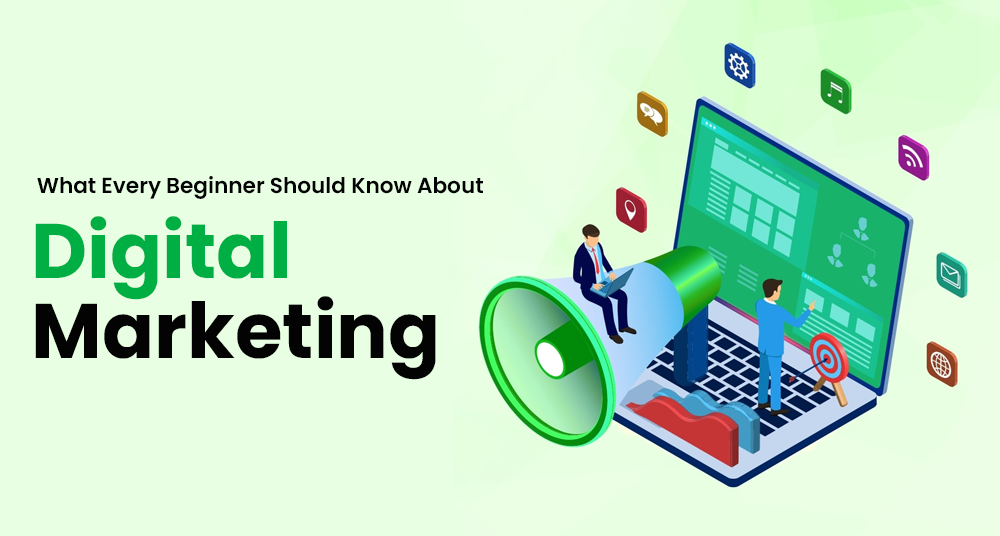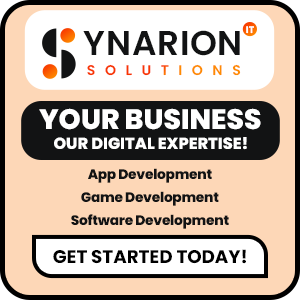Digital marketing, at its core, is the promotion of products, services, or brands using online channels. From social media to search engines, emails to websites, it’s all about reaching your audience where they spend most of their time — the internet. Broadly, digital marketing is divided into two main categories: organic (like SEO, social media content, and email marketing) and paid (like Google Ads, Meta Ads, and influencer promotions).
But in 2025, digital marketing is far more evolved than it was a few years ago. With AI-powered tools, voice search, hyper-personalization, short-form video dominance, and data-driven strategies, the game has changed completely. If you’re still using outdated strategies from 2020 or before, you’re likely falling behind in the race.
Today’s digital marketing is about creating experiences, not just content. It’s about intent, behavior, automation, and understanding micro-moments. Whether you’re a business owner, freelancer, or just starting your marketing journey — understanding the fundamentals with a modern approach is crucial.
In this guide, we’ll walk you through everything you need to know about digital marketing, so you can build strategies that actually convert in today’s fast-paced digital world.
What is Digital Marketing?
Digital marketing is a globally recognized term used for promoting products or services through digital channels. It includes strategies like SEO, social media marketing, email campaigns, and paid advertising. In today’s tech-driven world, digital marketing is essential for reaching target audiences, building brand awareness, and driving online growth across various platforms and devices.
Traditional Marketing vs Digital Marketing: What Sets Them Apart?
Traditional marketing and digital marketing differ primarily in the platforms they use to reach audiences. Traditional marketing relies on offline channels such as newspapers, magazines, billboards, TV, and radio. These methods have been around for decades and are effective for reaching local or older demographics.
Digital marketing, on the other hand, uses online channels like search engines, social media, email, and websites to promote products or services. It offers more precise targeting, real-time analytics, and cost-effective campaigns. While traditional marketing builds brand credibility through physical presence, digital marketing provides direct engagement, global reach, and measurable results.
Choosing the right strategy depends on your audience, goals, and budget—many modern businesses use a blend of both.
| Aspect | Traditional Marketing | Digital Marketing |
| Medium | Print, TV, Radio, Billboards | Social media, Email, SEO, Websites, Search Engines |
| Reach | Local or Regional | Global |
| Cost | Usually expensive (printing, TV ads, etc.) | Cost-effective; flexible ad budgets |
| Targeting | Broad, less precise | Highly targeted (based on age, interests, location, etc.) |
| Interaction | One-way communication | Two-way communication (comments, likes, shares, DMs) |
| Measurability | Difficult to track ROI | Easily measurable with analytics and real-time data |
| Speed | Slower campaign setup and results | Instant deployment and fast feedback |
| Flexibility | Less flexible; changes require time and money | Highly flexible; can be adjusted in real time |
| Examples | Newspaper ads, Flyers, TV commercials | Google Ads, Instagram posts, Email marketing |
It’s Not Just for Marketers—Digital Is for Everyone
In today’s hyperconnected world, digital marketing isn’t limited to professionals or big brands. Whether you’re a student, small business owner, freelancer, teacher, artist, or even a job seeker—understanding how digital channels work gives you a major edge. From building your personal brand to showcasing your skills online or growing a side hustle, digital literacy empowers you to stay relevant, competitive, and visible in any field.
A Closer Look at Digital Marketing Channels
Search Engine Optimization (SEO)
Platform Examples: Google Search Console, Ahrefs, SEMrush
SEO focuses on improving website visibility in organic search results. Tools like Ahrefs and SEMrush help monitor keyword rankings, analyze competitors, and optimize on-page and off-page strategies to drive consistent, long-term traffic from search engines.
Pay-Per-Click (PPC) Advertising
Platform Examples: Google Ads, Microsoft Ads
PPC allows marketers to display ads on search engines or partner websites, paying only when users click. Google Ads offers keyword targeting, audience segmentation, and measurable results for businesses looking for immediate visibility and conversions.
Social Media Marketing (SMM)
Platform Examples: Facebook, Instagram, LinkedIn, Twitter (X)
Social media marketing leverages platforms where users spend most of their time. Businesses create and promote content, run ads, and engage with audiences to increase brand awareness, build communities, and drive traffic or sales.
Content Marketing
Platform Examples: WordPress, Medium, HubSpot
This strategy involves creating valuable, relevant content to attract and retain a clearly defined audience. Platforms like WordPress allow blogs, guides, videos, and infographics to educate users and subtly push them down the sales funnel.
Email Marketing
Platform Examples: Mailchimp, ConvertKit, Sendinblue
Email marketing enables direct communication with leads and customers through personalized emails. It’s ideal for promotions, newsletters, and nurturing campaigns, offering high ROI when properly segmented and automated using tools like Mailchimp or Sendinblue.
Affiliate Marketing
Platform Examples: ShareASale, CJ Affiliate, Impact
Affiliate marketing rewards third parties (affiliates) for driving traffic or sales to your business. Platforms like ShareASale connect brands with content creators or influencers who promote their offerings in exchange for a commission.
Influencer Marketing
Platform Examples: Instagram, YouTube, TikTok, Influencity
This strategy taps into the trust and audience of influencers to promote products or services. Influencer platforms help brands collaborate with creators who align with their values and can drive real engagement and conversions.
Video Marketing
Platform Examples: YouTube, Vimeo, TikTok, Reels
Video marketing uses engaging visual content to inform, entertain, or promote. From YouTube how-tos to TikTok product showcases, videos boost retention and sharing, building stronger brand recall and emotional connections with audiences.
Mobile Marketing
Platform Examples: SMS, WhatsApp Business, In-app Ads
Mobile marketing targets users through smartphones and tablets. From SMS campaigns to WhatsApp promotions and mobile app ads, it’s a personalized approach to reaching users anytime, anywhere with timely offers or updates.
Online PR & Reputation Management
Platform Examples: Google Alerts, Brand24, Trustpilot
Online PR includes digital press releases, blogger outreach, and reputation monitoring. Tools like Brand24 help businesses manage mentions, respond to feedback, and build a trustworthy online presence that influences buying decisions.
Marketing Automation
Platform Examples: HubSpot, ActiveCampaign, Marketo, Zoho, Mailchimp
Automation streamlines repetitive tasks like email sequences, lead scoring, and campaign tracking. Platforms like HubSpot combine CRM, email, and automation into a single dashboard to boost productivity and marketing efficiency.
Web Analytics
Platform Examples: Google Analytics, Hotjar, Mixpanel
Analytics tools track user behavior, conversion paths, and traffic sources. With Google Analytics, you can evaluate campaign performance, user demographics, bounce rates, and more to make data-driven marketing decisions.
Digital Marketing: A Must-Have for Every Modern Business
Wider Reach & Global Audience
Digital marketing enables businesses to connect with a global audience instantly. Unlike traditional methods limited by geography, online platforms allow you to reach customers across borders, time zones, and demographics—expanding your visibility and brand presence exponentially.
Cost-Effective Marketing
Compared to traditional advertising like print or TV, digital marketing offers affordable solutions with higher ROI. Businesses can optimize their budget by targeting specific audiences, using pay-per-click, social media, and email strategies tailored to their financial capabilities.
Real-Time Performance Tracking
One of the biggest advantages is the ability to track campaigns in real time. With tools like Google Analytics, businesses can monitor user behavior, conversions, bounce rates, and campaign success instantly—making it easier to adjust strategies for better results.
Customer Targeting & Personalization
Digital marketing allows personalized communication by analyzing user data and behavior. Businesses can create tailored ads, content, and offers that resonate with specific segments, improving engagement, customer satisfaction, and the likelihood of conversion or repeat purchases.
24/7 Online Presence
Your business can stay active and reachable at all hours. Whether through websites, social media, or automated email campaigns, customers can access your products, services, and support anytime—enhancing convenience and trust in your brand.
Competitive Advantage
Staying ahead of the competition means adopting new trends and tools. Digital marketing provides innovative ways to differentiate your brand, improve customer engagement, and implement faster go-to-market strategies that give your business an upper hand in your industry.
Improved Customer Interaction
Tools like chatbots, live chats, and social media messaging foster instant communication with customers. These touchpoints help solve queries faster, collect feedback, and build stronger relationships—leading to enhanced loyalty and better brand experiences.
Scalability & Flexibility
Whether you’re a startup or an enterprise, digital marketing offers scalability. Campaigns can be adjusted based on performance or budget changes. You can scale quickly during product launches or downsize without significant losses, ensuring smart resource use.
Conclusion
In conclusion, digital marketing is no longer optional—it’s essential. As the digital landscape evolves with AI, data analytics, and mobile-first experiences, businesses and individuals alike must adapt to stay competitive. Whether you’re looking to grow a brand, connect with global audiences, or track real-time results, digital marketing offers the tools and platforms to do it all effectively. From SEO and social media to email and automation, mastering these channels opens up endless growth opportunities. Now is the time to embrace digital marketing not just as a strategy, but as a mindset for long-term success in the modern business world.






What do you think?
It is nice to know your opinion. Leave a comment.